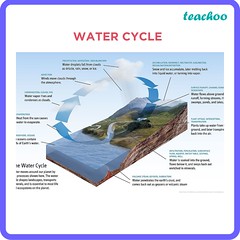CBSE Class 10 | Geography Chapter: Water Resources
Introduction
Water is essential for all life on Earth. From domestic use and agriculture to industry and electricity generation, water sustains our existence.Water Resources CBSE Class 10
However, despite its abundance, freshwater is limited and unevenly distributed across time and space in India. This chapter explores the importance of water resources, the challenges of water scarcity, and sustainable methods of water conservation and management.
I. Water: A Renewable But Exhaustible Resource
Although water is a renewable resource—replenished through the water cycle—its overuse and misuse make it vulnerable to scarcity.
🔹 India’s Water Wealth
India receives nearly 4% of the world’s freshwater resources. Yet, its growing population and development needs put tremendous pressure on this finite resource.
- Annual rainfall: Highly seasonal and uneven.
- Rivers: The Ganga, Brahmaputra, Indus, Godavari, and Krishna are major water sources.
- Groundwater: Used for drinking and irrigation but depleting fast in many regions.
II. Causes of Water Scarcity
Water scarcity doesn’t always mean lack of water—it may also result from inefficient management or overconsumption.
🔹 Major Causes:
- Over-exploitation
Excessive withdrawal for irrigation, especially in agriculture, is a major reason for scarcity. - Unequal Access
Some regions face floods while others suffer from droughts. The water is not distributed evenly. - Pollution
Rivers and groundwater are polluted by industrial waste, sewage, and chemicals. - Increasing Demand
Rapid urbanization, industrial growth, and rising population demand more water than ever.
III. Multipurpose River Projects: Boon or Bane?
To manage water efficiently, India built many multipurpose river valley projects. These aim to combine several benefits in one structure—irrigation, flood control, drinking water, hydroelectricity, and more.
🔹 Examples of Major Projects
- Bhakra Nangal (Satluj River) – Provides hydroelectricity and irrigation to Punjab, Haryana, and Rajasthan.
- Damodar Valley Project (Damodar River) – Known as the “River of Sorrows,” this project reduced flooding and promoted industry.
- Sardar Sarovar (Narmada River) – Aimed to benefit Gujarat and Madhya Pradesh.
Controversies and Concerns
- Displacement of Tribals: Large-scale dam construction led to the displacement of people and loss of biodiversity.
- Interstate Disputes: Water sharing has become a point of conflict among states.
- Ecological Impact: Alters river ecosystems and affects fish migration and natural silt flow.
🧠 Did You Know?
India is one of the world’s largest dam builders, with over 5,100 large dams and hundreds more under construction.
IV. Rainwater Harvesting: A Traditional and Modern Solution
Rainwater harvesting is the collection and storage of rainwater for future use. It is one of the most sustainable and cost-effective ways to combat water scarcity.
🔹 Traditional Methods in India
India has a long history of water conservation:
- Rooftop harvesting in Rajasthan
- Kunds and Tankas (underground tanks) in arid regions
- Bamboo drip irrigation in Meghalaya
- Johads and Baolis in Haryana and Delhi
🔹 Modern Techniques
- Urban households now use rooftop water harvesting to recharge groundwater.
- Cities like Chennai have made rainwater harvesting mandatory by law.
V. Sustainable Water Management
Water needs to be managed wisely to ensure availability for future generations.
🔹 Steps Toward Sustainability
- Afforestation: Forests help recharge groundwater.
- Water-saving irrigation: Techniques like drip and sprinkler systems reduce water wastage.
- Awareness campaigns: Encourage public participation and behavior change.
- Watershed management: Involves managing water at the local level, using structures like check dams.
VI. Quick Facts & Stats
- India ranks 13th among the world’s 17 most water-stressed countries (World Resources Institute, 2020).
- 85% of rural India’s drinking water needs are met by groundwater.
- 70% of available water is used in agriculture.
Conclusion: Save Every Drop
Water resources are critical for life, economy, and ecology. But with rising demands and shrinking supplies, India faces a growing water crisis.
Therefore, collective efforts at individual, community, and governmental levels are essential. Conservation, traditional wisdom, and scientific planning must go hand in hand to ensure that water remains a renewable, not an exhaustible, resource.

